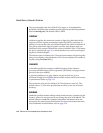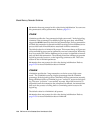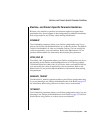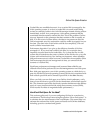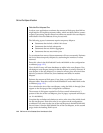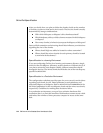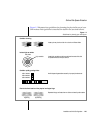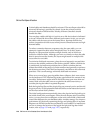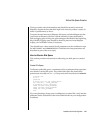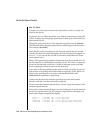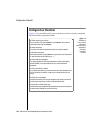
1-44 IBM Informix OnLine Database Server Administrator’s Guide
OnLine Disk Space Allocation
After you decide how you plan to define the chunks, decide on the number
of chunks you plan to create and a size for each. The size of a chunk is mostly
determined by storage considerations:
■ With which blobspace or dbspace is this chunk associated?
■ Which databases, tables, or blob columns are stored in this blobspace
or dbspace?
■ How many chunks (of what size) compose the dbspace or blobspace?
Issues of disk contention and mirroring should also influence your decisions
regarding the size of the chunks:
■ Where should high-use tables be located to reduce contention?
■ Where should the mirror chunks for each primary chunk be located
to maximize fault tolerance?
Space Allocation in a Learning Environment
If you are configuring OnLine for a learning environment, allocate a single
chunk for the root dbspace. Allocate a second chunk on a different device if
you plan to mirror the root dbspace. Ideally, different controllers should
manage the devices. The mirror chunk should be the size of the root dbspace,
specified as ROOTSIZE.
Space Allocation in a Production Environment
The configuration worksheet provides space for you to record your decisions
regarding each chunk: its size, linked pathname, actual pathname, and
associated dbspace or blobspace. Refer to ROOTPATH and MIRRORPATH for
the linked pathnames for the root dbspace chunk and the mirror root chunk,
respectively. Guidelines for making these decisions follow.
In a production environment, your goal is to minimize hardware disk
contention; that is, to limit the amount of disk head movement across a disk
and reduce the number of times processes compete for access to the same
disk.



